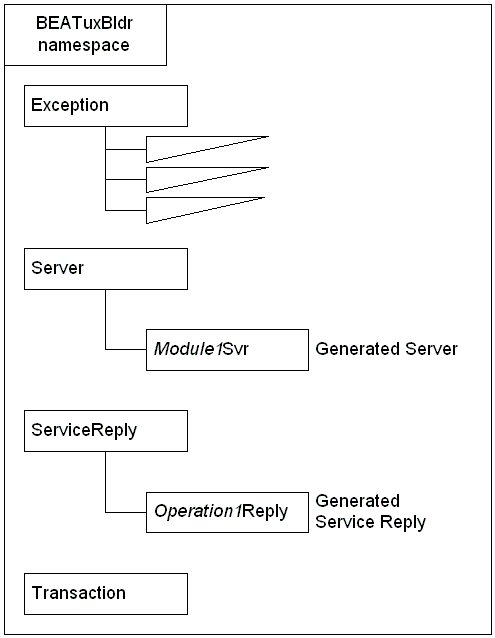The architecture of the application generated by the Rose Expert is built around the Rose metamodel, shown below.
Figure 4-1 Rose Metamodel

The Rose Expert uses the information from the Rose Model to generate C++ bindings for each item in the form of Service Request classes and Server Implementation classes. Those elements are mapped to C++ classes in this fashion:


